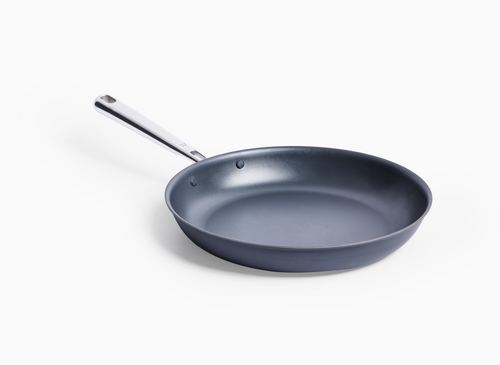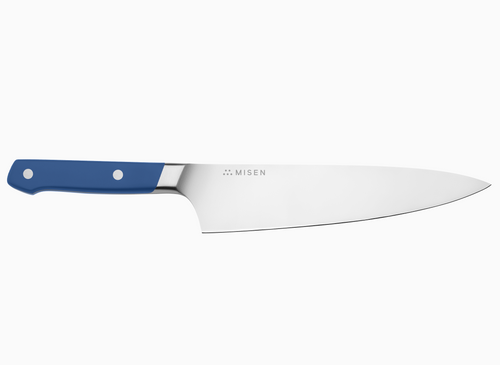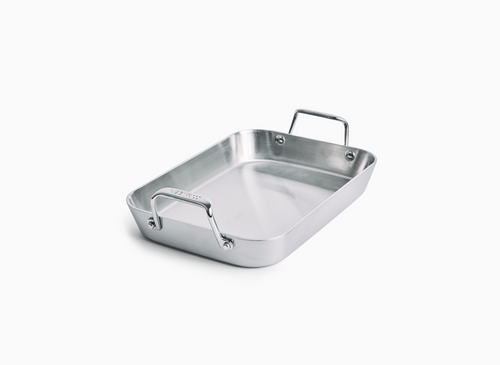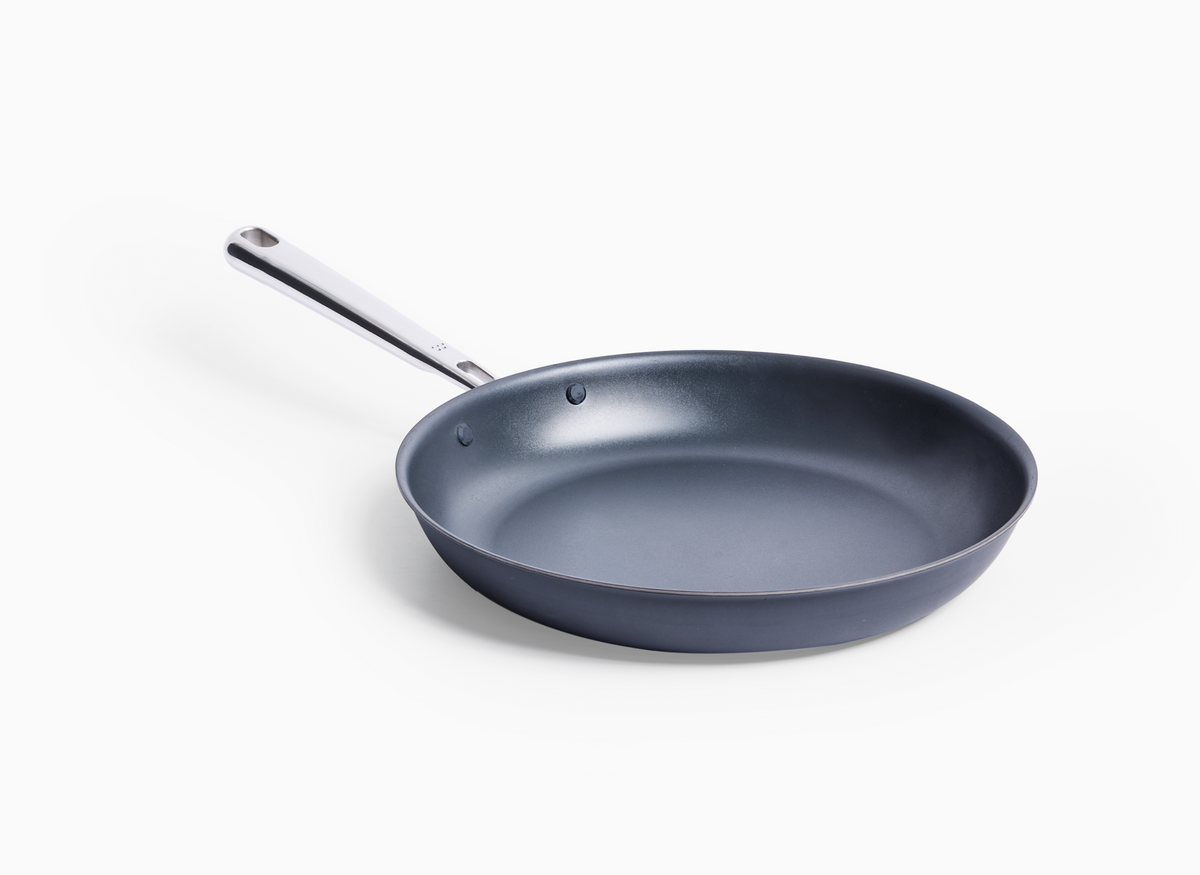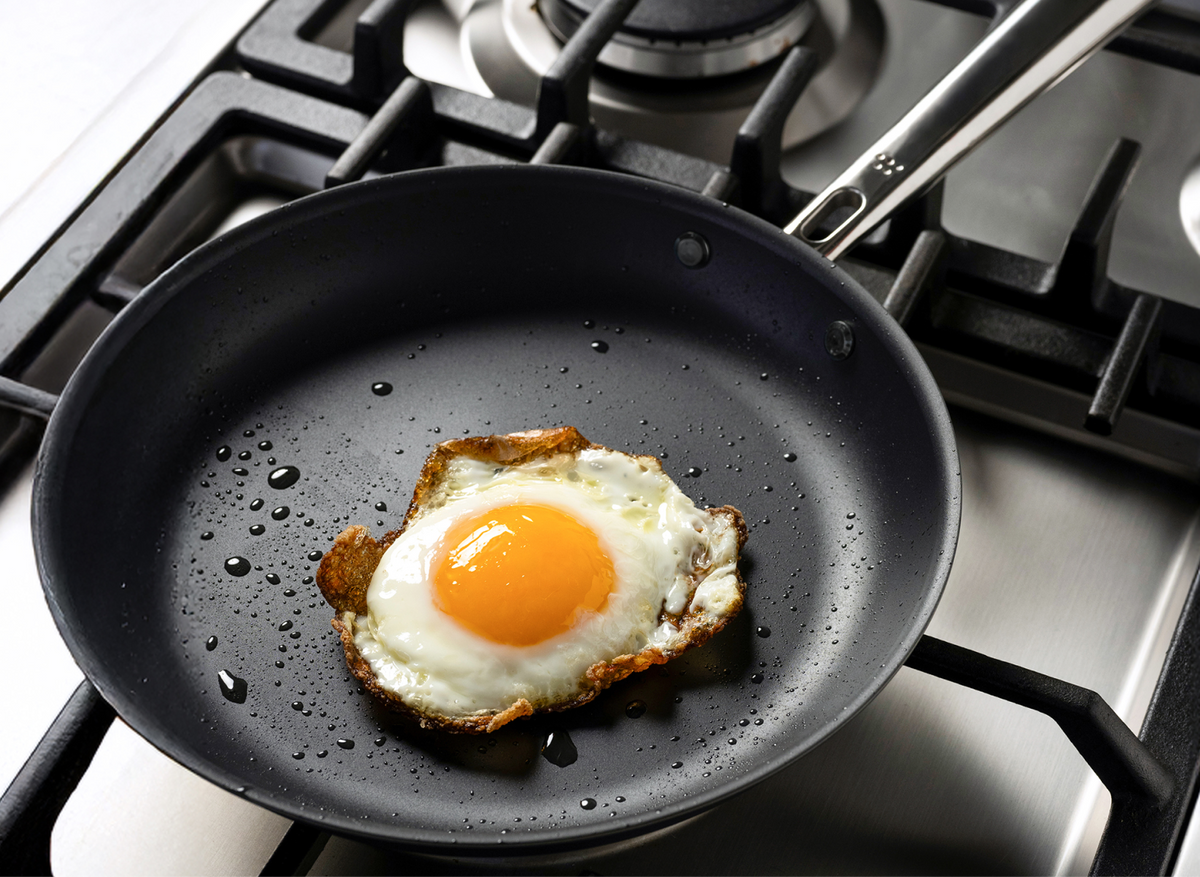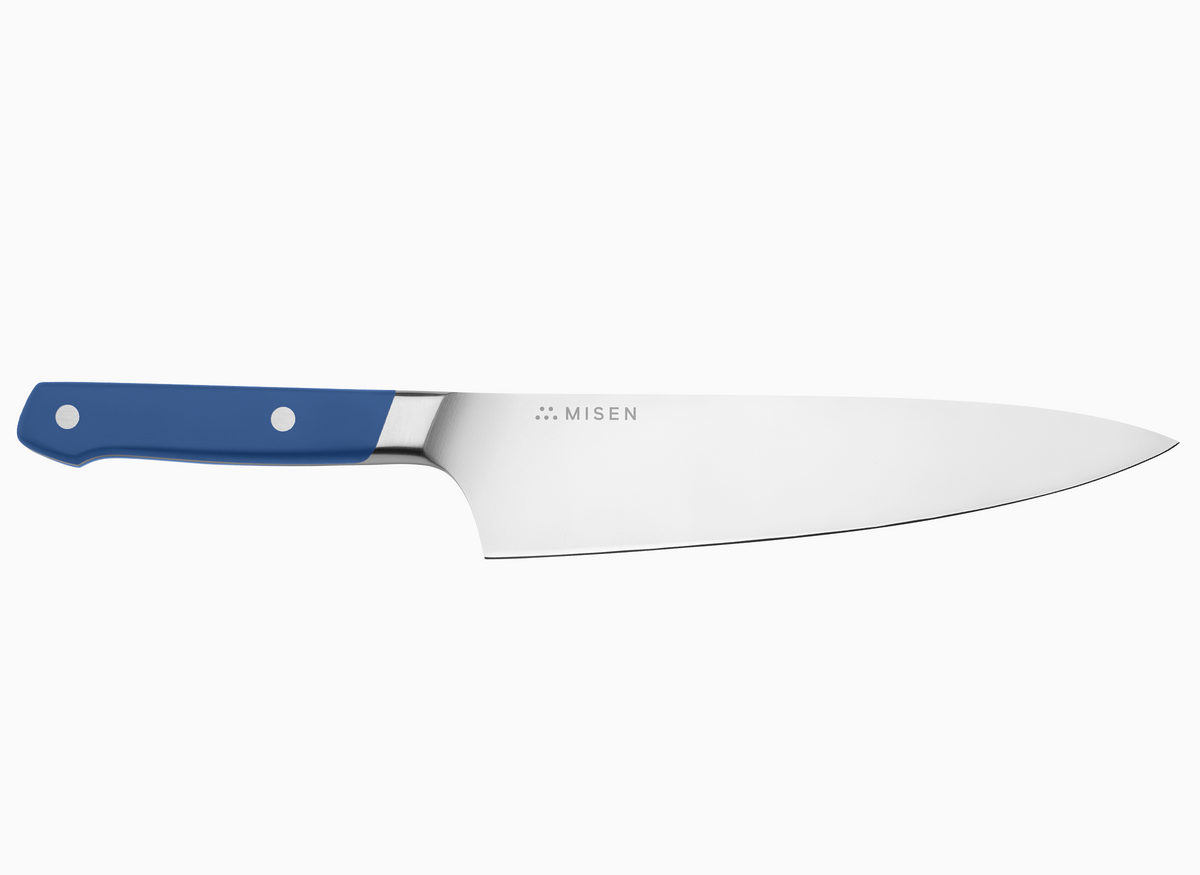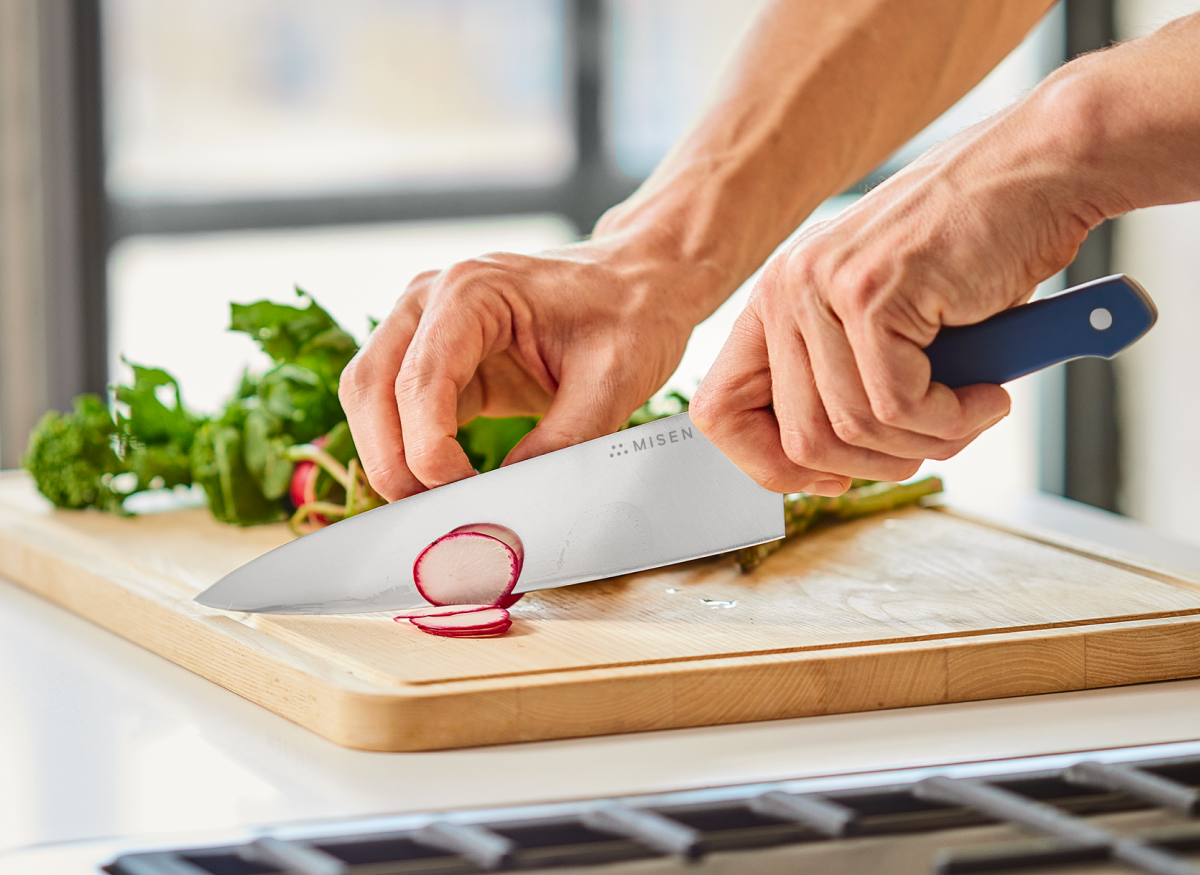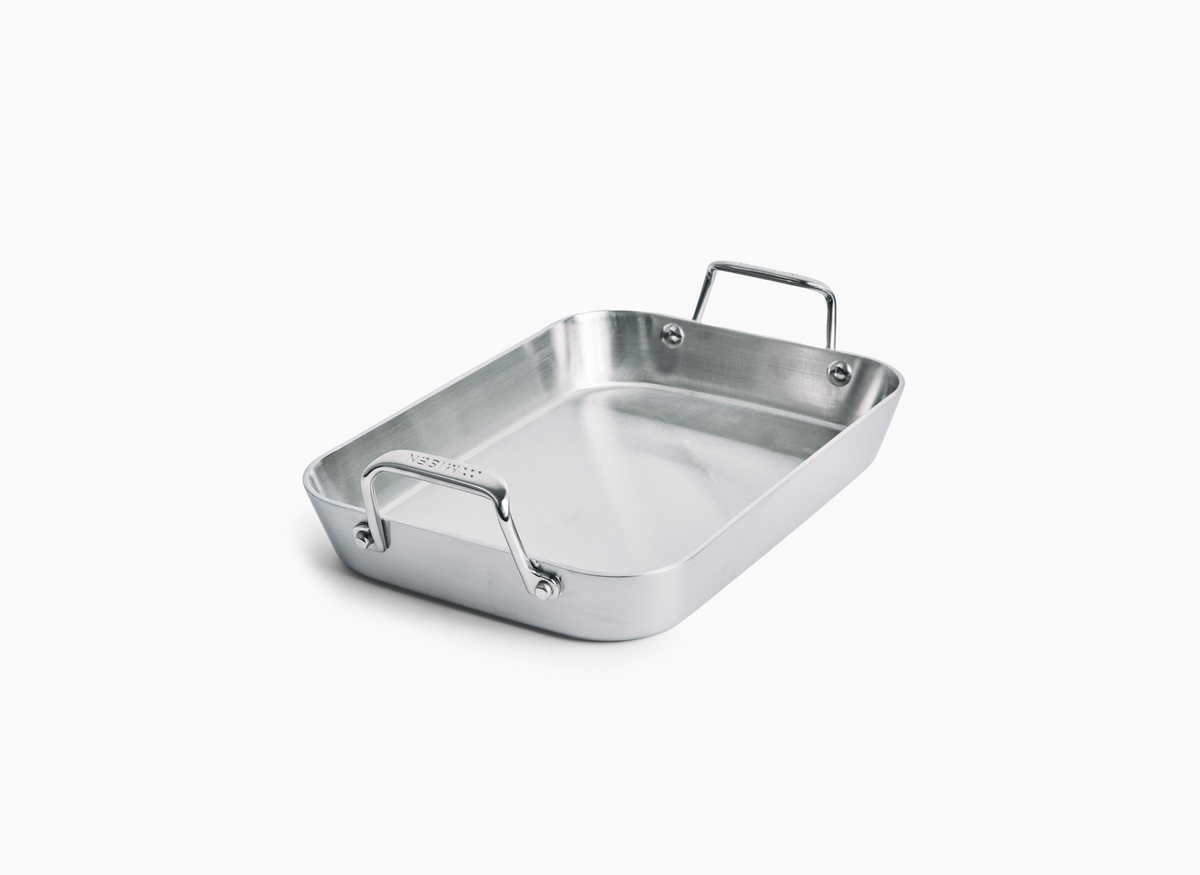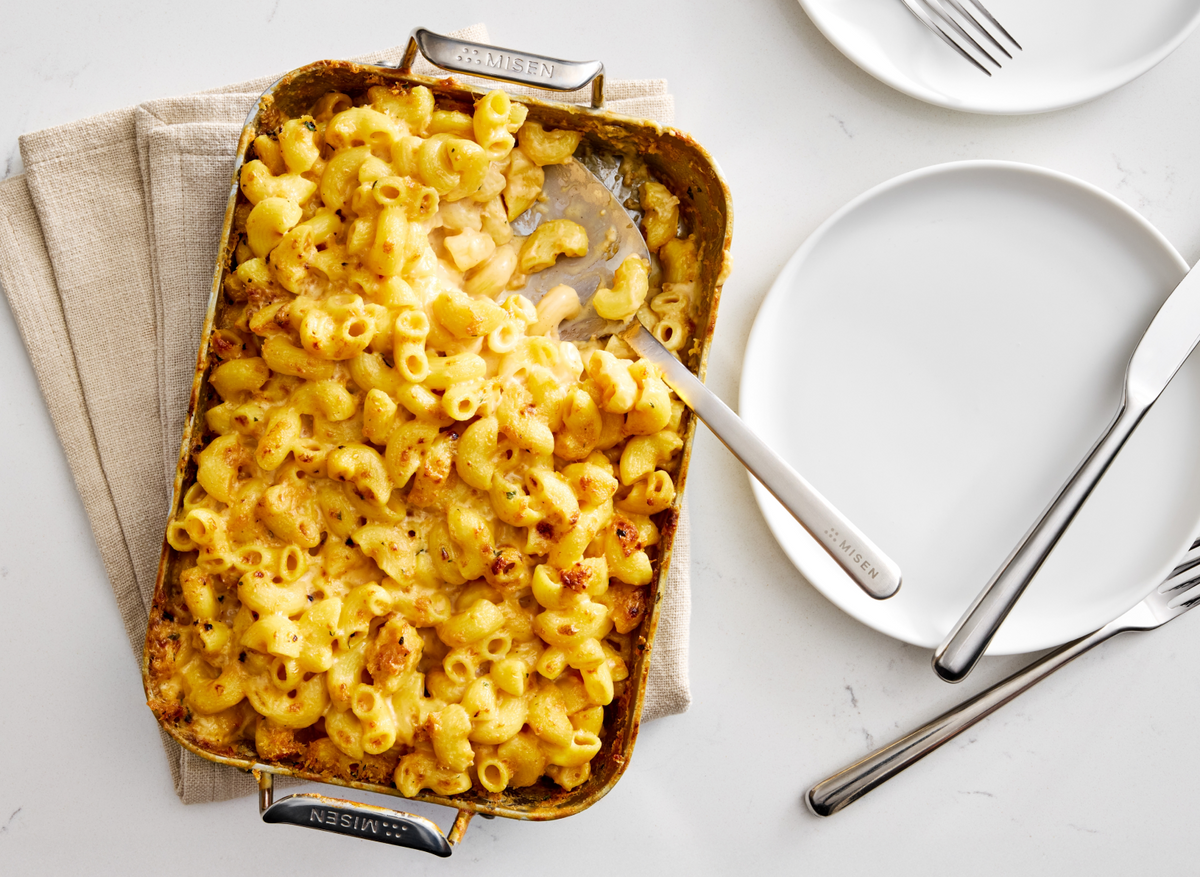Cream Swap: Can I Use Half and Half Instead of Heavy Cream in Recipes?
Cream Swap: Can I Use Half and Half Instead of Heavy Cream in Recipes?
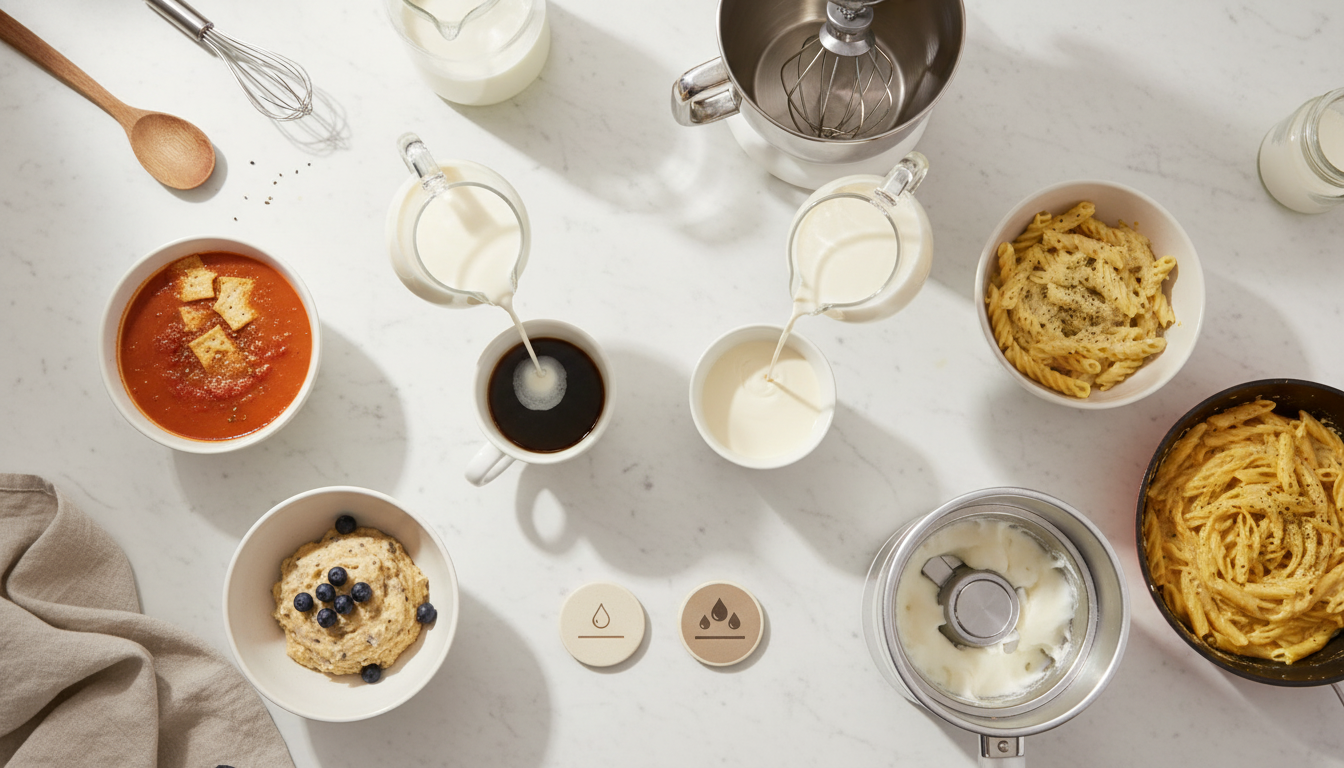
Half-and-half can successfully replace heavy cream in many recipes, but understanding when and how to make this substitution is crucial for cooking success. This comprehensive guide explores the key differences between half-and-half (10-18% fat) and heavy cream (36-40% fat), revealing which recipes welcome the swap and which demand the real thing. Learn practical techniques to upgrade half-and-half, discover alternative substitutes, and master the art of dairy substitution in your kitchen.
Introduction
Running out of heavy cream doesn't have to derail your recipe when you understand which substitutes work and when they won't compromise your dish.
The Common Kitchen Dilemma: Out of Heavy Cream?
You're in the middle of making a recipe when you realize you're out of heavy cream - a common kitchen predicament that can derail your cooking plans. Heavy cream, with its rich 36-40% fat content, plays a crucial role in everything from whipped toppings to velvety sauces [1]. While it may seem like a showstopper when you're missing this key ingredient, running to the store isn't always necessary. Most kitchens already contain viable alternatives that can work in many recipes. The key is understanding which substitutes will work for your specific cooking needs, since heavy cream's high fat content makes it uniquely suited for certain applications like whipping into stiff peaks or creating stable sauces [2].
Why People Consider Half-and-Half as a Substitute
Half-and-half offers an appealing middle ground between milk and heavy cream, containing 10.5-18% milkfat [5]. This makes it perfect for home cooks who want creaminess without the full richness of heavy cream - especially useful when making lighter cream sauces that won't overwhelm delicate dishes. Many recipes like mashed potatoes, casseroles, and pasta dishes work beautifully with half-and-half when you don't need maximum fat content [5]. The product's balanced composition - equal parts whole milk and cream - makes it a practical pantry staple that enhances dishes without overwhelming them [5].
What This Article Will Cover: When the Swap Works (and When It Doesn't)
This guide will show you exactly when half-and-half works as a heavy cream substitute - and when it doesn't. You'll discover that coffee, tea, light cream sauces, and many baked goods like muffins and quick breads welcome the swap [4]. But whipped toppings, ice cream, and rich sauces demand heavy cream's higher fat content [6]. We'll also share practical techniques for upgrading half-and-half when needed, including the butter method and stabilizing tricks [4]. With these insights, you'll confidently adapt recipes based on what's in your refrigerator.
Understanding the Difference: Half-and-Half vs. Heavy Cream
Half-and-half contains 10-18% fat while heavy cream boasts 36-40%, creating dramatically different cooking properties and textures.
Composition and Fat Content (10-15% vs. 30-40%)
The fundamental difference between half-and-half and heavy cream comes down to fat content. Heavy cream gets its richness from the fatty layer that naturally rises to the top of fresh milk, resulting in a luxurious 36-40% milk fat content. Half-and-half, despite what its name suggests, isn't exactly a 50-50 split - it's equal parts whole milk and cream, giving it a lighter 10.5-18% milk fat content. This fat difference impacts everything from calories (heavy cream packs about 51 calories per tablespoon versus half-and-half's 20) to how each performs in your recipes. The FDA keeps these definitions strict, so when you reach for either product, you know exactly what fat content you're getting.
Texture and Consistency Differences
You'll notice the texture difference immediately when working with these two dairy products. Heavy cream feels thick and coats the spoon, thanks to all that extra fat providing body and structure. Half-and-half pours more like milk - silky and fluid rather than rich and dense. In your cooking, this translates to very different results. Heavy cream creates that decadent, velvety mouthfeel in sauces and can whip into stable peaks (more on whipping limitations in our "When to Avoid" section below). Half-and-half brings a gentler creaminess that won't overwhelm delicate dishes. Since it contains both milk and cream, you'll also taste subtle milk notes that pure heavy cream doesn't have - perfect when you want dairy flavor without excessive richness.
Flavor Profiles and Culinary Properties
Think of heavy cream as pure, concentrated dairy richness - it tastes exactly like what it is: the cream that rises to the top. Half-and-half brings more complexity to the table. While lighter overall, its milk component adds those familiar fresh milk notes that complement rather than dominate other flavors.
This difference really shines through in cooking applications. Heavy cream's high fat content creates stable emulsions and luxurious sauces that hold together beautifully. Half-and-half works best when you want to add creaminess without masking other flavors - think cream of mushroom soup where you still want to taste the mushrooms. The key is matching the dairy to your dish's needs.
How Each Behaves When Heated (Curdling Concerns)
Here's where the fat content really makes a difference - and where your cookware matters. Heavy cream can handle high heat without breaking a sweat (or breaking into curds). You can simmer it in a quality saucepan for extended periods, and it will reduce beautifully without separating. That's because fat acts as a protective barrier, preventing the proteins from clumping together.
Half-and-half requires more careful handling. Its lower fat content means it's more prone to curdling, especially when exposed to high heat or acidic ingredients. The proteins in half-and-half are more exposed and reactive - add lemon juice or wine to a hot half-and-half sauce, and you might end up with an unappetizing mess. To prevent this, keep temperatures moderate and add acidic ingredients at the end of cooking when possible.
When You Can Successfully Substitute Half-and-Half
Half-and-half excels in coffee, soups, and baked goods where you want creaminess without the heaviness of full-fat cream.
Coffee, Tea, and Beverage Applications
Half-and-half shines as a versatile coffee and tea addition, offering an ideal middle ground between milk and heavy cream. It provides just enough richness without overwhelming your morning brew - think of it as the Goldilocks of coffee creamers. While heavy cream delivers maximum indulgence, many home cooks prefer half-and-half in their daily beverages since it's both lighter and typically more affordable while still creating that perfect creamy swirl. For hot beverages, half-and-half creates a silkier, lighter texture that enhances drinks without masking their flavor. The milk component also contributes subtle dairy notes that complement coffee and tea differently than pure cream - you'll taste more of your actual beverage while still enjoying that creamy mouthfeel.
Soups, Chowders, and Lighter Sauces
Half-and-half works beautifully in soups, chowders, and lighter sauces where you want creaminess without heaviness. For dishes like corn chowder or cream of mushroom soup, it provides just the right richness - your soup will be velvety without feeling like a meal in itself. When cooking with half-and-half, keep your heat at medium-low and stir frequently for best results. For pasta sauces, half-and-half can definitely work - just be mindful of your liquid ratios since it's thinner than heavy cream. A helpful tip: if you're making a cream sauce in your stainless steel skillet, add the half-and-half at the end of cooking and keep the heat gentle to prevent curdling.
Certain Baking Recipes (Muffins, Quick Breads, Some Cakes)
Half-and-half performs well in many baked goods where the fat content isn't critical for structure. For quick breads, muffins, and some cakes, half-and-half can substitute for heavy cream while still providing adequate moisture and richness. Classic Southern pound cake recipes successfully incorporate half-and-half to create a tender crumb, though the texture may be slightly less rich than versions made with heavy cream [10]. In breakfast bakes like French toast casseroles and bread puddings, half-and-half creates a silky custard base that bakes up beautifully [10]. The lower fat content actually works in favor of these recipes, as it allows the egg proteins to set properly without becoming too dense. For recipes like brioche French toast casserole, half-and-half provides the perfect balance of creaminess while maintaining a light, custardy texture [10].
Everyday Cooking Where Texture Isn't Critical
Many everyday cooking tasks don't require heavy cream's high fat content for success. Think scrambled eggs that are creamy but not heavy, or mashed potatoes with just the right amount of richness. The lighter texture of half-and-half actually shines in dishes where you want to add creaminess without overwhelming other flavors - like in a delicate cream of asparagus soup or a light chicken and mushroom skillet dinner. It's also your friend for quick pan sauces after searing meat, where a splash creates instant elegance without heaviness. For finishing touches - like swirling into tomato soup or drizzling over roasted vegetables - half-and-half provides that touch of luxury while letting the main ingredients remain the star. These are the everyday moments where half-and-half proves its worth in your kitchen arsenal.
When to Avoid Using Half-and-Half Instead of Heavy Cream
Half-and-half won't whip, won't create stable emulsions, and lacks the fat needed for ice cream's creamy texture.
Whipping Applications (Why Half-and-Half Won't Whip)
Half-and-half simply won't whip into peaks, no matter how long you beat it. The reason? It lacks the crucial fat network that gives whipped cream its structure and ability to hold shape. While you can whisk half-and-half until your arm falls off, it'll remain liquid.
There's a workaround if you're in a pinch, though it's not perfect. Try melting butter (about 1/8 the amount of half-and-half you're using) and vigorously whisking it in. This can help build some volume, but don't expect the light, fluffy peaks of real whipped cream. For true whipped toppings, you'll need the real deal - heavy cream is irreplaceable here.
Ice Cream and Frozen Desserts
When it comes to ice cream and frozen desserts, half-and-half falls short. While traditional ice cream requires at least 10% milk fat according to US standards, premium textures demand much more. The churning process incorporates air and creates tiny ice crystals for that signature smooth texture - but without enough fat, you'll end up with an icy, disappointing result.
Whether you're making French-style custard-based ice cream or the simpler Philadelphia-style, the fat content matters. It provides the molecular structure that keeps your frozen dessert creamy rather than crystalline. Commercial ice creams often use stabilizers to maintain texture, but at home, your best bet is starting with the right ingredients. Save the half-and-half for your coffee and reach for heavy cream when making frozen treats.
Rich, Stable Sauces (Alfredo, Hollandaise)
Classic sauces like Alfredo and hollandaise are unforgiving when it comes to fat content. These rich, stable emulsions need heavy cream's higher fat percentage to maintain their signature textures. In Alfredo sauce, that fat prevents curdling during reduction, allowing the sauce to thicken naturally as water evaporates without breaking. The result? That velvety consistency that clings perfectly to pasta.
Hollandaise presents an even bigger challenge - its delicate emulsification demands precise fat ratios for that smooth, creamy finish. Half-and-half tends to curdle and separate when heated for these applications. While some home cooks try workarounds like adding thickeners or extra cheese to Alfredo made with half-and-half, the results never quite match the silky stability of the real thing. For these classic sauces, it's worth using the right saucepan and the right cream.
Recipes Where Fat Content Is Crucial for Structure
Some recipes simply won't work without heavy cream's higher fat content. Custard-based dishes and rich fillings need that extra fat to develop their signature consistency - use half-and-half and you'll notice the difference in richness and body. The same goes for certain cakes and pastries where fat provides crucial structure. Without enough fat, these delicate baked goods may collapse or fail to achieve the right texture.
This is especially true for recipes that rely on emulsification or require specific fat-to-liquid ratios. The fat network in heavy cream gives these dishes their ability to hold shape and maintain structure. While half-and-half works fine in quick breads and muffins (as covered in the previous section), recipes with precise structural requirements need the real thing. Think of it this way: if the recipe's success depends on fat for stability, don't compromise.
Upgrading Your Half-and-Half: Methods to Make It Work Like Heavy Cream
Transform half-and-half into a heavy cream substitute by adding melted butter or using thickening agents for specific recipes.
The Butter Method: Adding Fat to Half-and-Half (Ratios and Techniques)
The butter method is your best friend when you need to boost half-and-half's richness. Simply mix ⅞ cup of half-and-half with ⅛ cup of melted butter, or for a full cup replacement, combine ¾ cup half-and-half with ¼ cup melted butter. This works beautifully for most cooking and baking needs where you want that creamy texture - though don't expect it to whip into peaks.
Here's why it works: butter contains over 80% fat, which helps bridge the gap between half-and-half's lighter consistency and heavy cream's richness. Just remember to let your melted butter cool to room temperature first. For the smoothest results, give the mixture a quick blend to keep everything well combined.
Thickening Agents to Improve Consistency (Cornstarch, Flour)
Thickening agents offer another smart way to give half-and-half more body. Cornstarch is particularly useful - just mix 1-2 teaspoons per cup of half-and-half. Here's the trick: dissolve the cornstarch in a small amount of cold liquid first to avoid lumps, then add it to your recipe.
When cooking with this mixture, keep the heat at medium and stir constantly. Don't let it boil - that's a recipe for curdling. For cold applications, you'll need to pre-cook the mixture: heat it gently while whisking until it reaches a simmer (around 203°F) and thickens up, then chill before using.
Keep in mind that while cornstarch works great for soups and sauces, it's not your best bet for baking or any recipe that needs whipping. For baked goods, a bit of flour can add structure, though you won't get quite the same richness as with real heavy cream.
Stabilizing Techniques for Hot Applications
Working with half-and-half in hot dishes requires a gentle touch. The golden rule? Never let it boil. Keep your heat at medium-low and stir constantly - your patience will be rewarded with smooth, stable results. When adding half-and-half to an already hot mixture, always practice tempering: gradually whisk small amounts of the hot liquid into your cold half-and-half until it's warmed before adding it back to the pot. This prevents the proteins from seizing up and curdling.
Recipe-Specific Adjustments for Best Results
Every recipe needs its own approach when swapping in half-and-half. Here's your game plan:
For beverages: Go ahead and use it straight - coffee and tea actually benefit from half-and-half's lighter touch.
For pasta sauces: Add a cornstarch slurry (1-2 teaspoons per cup) to give your sauce body and prevent it from breaking during cooking.
For baking: Quick breads and muffins do best with the butter boost - mix ¾ cup half-and-half with ¼ cup melted butter for each cup of heavy cream called for.
For custards: Low and slow wins the race. Always temper by gradually whisking hot liquid into the cold half-and-half before combining everything.
For soups and sauces: Hold off on salt and acidic ingredients until the very end - they're the enemies of a smooth, stable sauce.
Beyond Half-and-Half: Other Substitutes for Heavy Cream
From Greek yogurt to coconut cream, multiple alternatives can replace heavy cream based on your recipe's specific needs.
Milk and Butter Combinations
As we covered in the half-and-half upgrading section, milk and butter combinations offer a reliable heavy cream substitute. The classic ratio combines ⅔ cup whole milk with ⅓ cup melted butter per cup of heavy cream needed. This works well because butter's 80% fat content helps boost milk's modest 3.5% fat level. Just remember - this combo won't whip, so save it for cooking and baking where you need richness without peaks. Let that melted butter cool to room temperature before mixing for the smoothest results.
Greek Yogurt, Sour Cream, and Other Dairy Alternatives
Greek yogurt blended with whole milk creates a protein-packed alternative - just mix equal parts for a consistency similar to heavy cream. Keep in mind this won't whip, and add it off the heat to avoid curdling. Sour cream brings a tangy twist that works especially well in desserts when sweetened with powdered sugar, though watch the temperature since it can separate more easily than heavy cream.
For cooking applications where stability matters, crème fraîche is your best bet. Its higher fat content compared to sour cream means it won't curdle in hot soups and sauces. Cream cheese works as a direct 1:1 swap in frostings and creamy soups - just make sure those subtle cheesy notes fit your recipe. Want maximum indulgence? Mascarpone, with its whopping 75% fat content, delivers richness with a hint of sweetness that enhances everything from pasta sauces to desserts.
Non-Dairy Options (Coconut Cream, Nut Creams)
Coconut cream leads the pack for non-dairy options. With 20g of fat per half cup, it's rich enough to whip into peaks when chilled overnight. Yes, you'll taste a hint of coconut, but that subtle flavor enhances both sweet and savory dishes.
For a neutral-tasting alternative, cashew cream is unbeatable. Soak raw cashews for 4 hours (or quick-soak in boiling water for 10 minutes), drain, then blend with water until silky smooth. The result? A versatile cream that works in everything from morning coffee to evening pasta. Pro tip: use a high-powered blender for the smoothest texture.
Choosing the Right Substitute Based on Your Recipe
Choosing the right substitute comes down to matching your recipe's specific needs. For everyday coffee and tea, half-and-half does the job perfectly - you'll get enough richness without going overboard. Baking calls for the milk-butter combo we discussed earlier, which delivers the fat content your cakes and pastries need.
In savory cooking, evaporated milk shines. Its concentrated nature thickens soups and sauces without changing the flavor profile. Going dairy-free? Coconut cream handles both sweet and savory dishes (just embrace that subtle coconut note), or blend ⅔ cup plant milk with ⅓ cup neutral oil for a more neutral taste. Need whipped peaks without dairy? Coconut cream is your only real option - just make sure it's well-chilled before whipping.
Conclusion
Summary: When Can You Use Half-and-Half Instead of Heavy Cream?
You can successfully use half-and-half instead of heavy cream in many recipes - the key is knowing when it works and when it doesn't. As we've covered throughout this guide, half-and-half performs beautifully in coffee, tea, soups, and many baked goods where you want creaminess without heaviness. It's also a smart choice for everyday cooking when you're watching calories (317 per cup versus heavy cream's 809).
The simple rule? If a recipe needs whipping, stable structure, or high-heat reduction, stick with heavy cream. For everything else, half-and-half often works just fine - you'll just need to handle it more gently and consider the techniques we've discussed for boosting its performance.
Key Takeaways for Successful Substitution
Here's your quick reference for making half-and-half work in place of heavy cream:
Direct swaps: Coffee, tea, light sauces - use equal amounts
Baking boost: Add ¼ cup melted butter to ¾ cup half-and-half per cup needed
Heat protection: Always temper by adding hot liquid slowly to cold half-and-half
Thickening help: Mix in 1-2 teaspoons cornstarch per cup for sauces
Won't work: Whipping, ice cream, or recipes needing stable structure
The techniques from our "Upgrading Your Half-and-Half" section will help you achieve the best results in specific applications.
Confidence in the Kitchen: Experimenting with Cream Alternatives
Understanding ingredient substitutions gives you the freedom to cook on your own terms. When you know why ingredients work the way they do, you can make smart swaps that fit your needs - whether that's using what's on hand, cutting calories, or accommodating dietary restrictions.
This knowledge transforms you from someone who follows recipes to someone who creates in the kitchen. You'll start seeing possibilities instead of limitations. And with the right tools - like a quality stainless steel pan that handles everything from gentle cream sauces to high-heat searing - you'll have the confidence to experiment and make every recipe your own.
Remember: cooking is about making food that works for you. Now that you understand how half-and-half and heavy cream function differently, you can choose the right one for your needs every time.
- Heavy cream is the fat that collects on top of fresh milk if it hasn't been homogenized or blended. According to FDA standards, heavy cream must contain between 36% and 40% fat—one of the highest percentages of any dairy product. - https://www.epicurious.com/expert-advice/heavy-cream-substitute
- Heavy cream, also referred to as heavy whipping cream, is a simple ingredient that makes a big difference in recipes. A splash of heavy cream can enrich the flavor and texture of a sauce or soup, and combining heavy cream and a little work with a whisk creates whipped cream — a decadent element that can be incorporated into pastries, puddings, and other desserts. - https://www.allrecipes.com/article/heavy-cream-substitutes/
- Half-and-half is a mixture of equal parts whole milk and cream. According to the US Food and Drug Administration (FDA), half-and-half contains between 10.5 percent and 18 percent milk fat - https://www.foodnetwork.com/how-to/packages/food-network-essentials/half-and-half-vs-heavy-cream
- One cup of heavy cream contains 809 calories and 86 grams of fat, per USDA data. One cup of half-and-half contains 317 calories and 28 grams of fat - https://www.realsimple.com/food-recipes/recipe-collections-favorites/popular-ingredients/half-and-half-vs-heavy-cream
- You've probably used half-and-half in your morning cup of coffee...or to add thickness to dishes like pot pie and green bean casserole - https://www.thepioneerwoman.com/food-cooking/cooking-tips-tutorials/a39413328/half-and-half-vs-heavy-cream/
- By law, half-and-half must contain 10.5% to 18% fat. It's a mixture of approximately equal parts milk and cream, making it lighter in texture...Heavy cream must contain 36% or more fat, making it much richer and thicker. - https://www.simplyrecipes.com/heavy-cream-vs-half-and-half-expert-8718907
- Heavy cream is made from collecting the milk fat that separates and floats to the top of fresh milk before it's homogenized - https://www.eatingwell.com/article/8048612/half-and-half-vs-heavy-cream/
- Heavy cream contains the most fat and calories of the three, with one tablespoon (15 mL) containing about 51 calories... Meanwhile, 1 tablespoon (15 mL) of coffee creamer contains about 20 calories - https://www.healthline.com/nutrition/cream-vs-half-and-half-vs-coffee-creamer
- Half and half are commonly used in breakfast cereals, coffee, soups, mashed potatoes, andpasta sauces. However, its lower fat content means it is more prone to curdling when heated at high temperatures. - https://pastasphere.com/half-and-half-vs-heavy-cream-pasta-sauce/
- Classic Southern Pound Cake... Brioche French Toast Casserole... Half-and-half provides the perfect balance of creaminess... French toast without having to stand by the stove flipping all morning with this casserole version of the classic breakfast dish. - https://www.southernliving.com/recipes-with-half-and-half-7560371?srsltid=AfmBOooP6msLYnK6ldSItitPbMBwUOPp2igvL3yW-6As2Mzt9wB4vPIQ
- Very few ice creams would be made solely with heavy cream, which has a fat content of 36%-40%. In the US, in order to be labeled as ice cream the product must have a milk fat content of at least 10%. - https://www.quora.com/Is-ice-cream-basically-just-frozen-heavy-cream
- Unlike traditional ice cream, which is hardened by freezing, soft serve is made to be consumed immediately, keeping its texture soft and smooth. The key factors contributing to this texture include the size of ice crystals, the amount of air whipped into the mixture (known as overrun), and the use of emulsifiers and stabilizers. - https://bigredtreats.com/blogs/news/the-science-behind-the-perfect-soft-serve-ice-cream-texture
- I use heavy cream, also labeled as heavy whipping cream. It usually contains no less than 36% milkfat, providing a nice velvety consistency. The high amount of fat reduces the chance of the sauce curdling, which is critical during the reduction process. - https://www.jessicagavin.com/alfredo-sauce/
- Oh wow this is an amazing recipe, I didn't have heavy cream and tried the evaporated milk. I used an 8 oz block of Philadelphia cream cheese and 1/2 cup of mozzarella instead of the roux - https://cookingwithkarli.com/alfredo-sauce-recipe-fast-easy/
- While this sauce may seem a bit on the fancy side, it's actually very easy to make! But like many other emulsions, the fear that it will separate or not come together can be a bit nerve wracking. - https://downshiftology.com/recipes/hollandaise-sauce/
- Just mix ⅞ cup of half-and-half with ⅛ cup of melted butter, and voilà, you've got something that mimics the richness of heavy cream. This makeshift "half-and-half cream" is great for recipes where the texture and density of heavy cream really matter - https://www.chowhound.com/1528603/heavy-cream-substitute-butter-half-and-half/
- Melt 1/4 cup unsalted butter (that's 4 tablespoons or half a stick) and let it cool to room temperature. Then, whisk it together with 3/4 cup whole milk. This mixture is equivalent to 1 cup of heavy cream - https://www.thekitchn.com/heavy-cream-substitute-23004405
- To thicken it up and prevent curdling, mix in 1 to 2 teaspoons of cornstarch per cup of half-and-half. Here's how: Dissolve the cornstarch fully in a small amount of cold half-and-half before adding it to the recipe. Heat the mixture slowly over medium heat, stirring constantly until it thickens. Avoid boiling. - https://foodess.com/article/heavy-cream-substitute/
- Stir together 1 cup milk with 1 tablespoon cornstarch. The texture will be similar to that of half-and-half so it makes for an easy substitute. - https://www.thepioneerwoman.com/food-cooking/cooking-tips-tutorials/g37068816/half-and-half-substitute/
- Dairy has three main components: fat, proteins, and water. Curdling occurs when the proteins in a sauce denature and bind together, separating from the water and tightening up into curds. Dairy or egg-y sauces can curdle for several reasons: There might not be enough fat in the sauce; skim milk will curdle much more easily than other, fattier dairy products. High heat can also cause sauces to curdle; low and slow is the safest option. You should never let a dairy-based sauce boil. - https://www.tastingtable.com/1186544/ways-to-prevent-and-fix-broken-sauce/
- Don't add cold milk directly into a hot liquid. Instead, whisk small amounts of the hot liquid into the cold milk. When the milk is warm, then add it to the hot liquid. This process is called tempering. Starches like flour or cornstarch help stabilize the milk emulsion. This will prevent it from separating. - https://www.thespruceeats.com/prevent-milk-from-curdling-when-cooking-996067
- You know your sauce is about to break when you see little fat droplets forming around the edge. If this happens, halt: Add a tablespoon or so of liquid and whisk vigorously until the sauce tightens back up. - https://food52.com/story/14876-kitchen-rescue-how-to-fix-a-broken-or-curdled-sauce?srsltid=AfmBOoo-1fRV4-EI2ZiVmKTy_ZnanpQJfBRpVz1oULvKf-A1v2johz4y
- Half-and-half can be used in recipes where extra fat is needed beyond the fat content that is found in regular milk, but not the high-fat content of heavy cream. The combination works great for lighter custards such as flan or the egg custard mixture you would use for bread pudding. - https://www.seriouseats.com/half-and-half-substitutes-8748285
- A mixture of Greek yogurt and whole milk is another alternative to heavy cream that will help you thicken up your recipes. Greek yogurt is high in protein and can provide a healthy twist to your finished product by increasing the protein content. It's thicker than heavy cream, but you can add milk to thin it out and achieve a texture similar to that of heavy cream. Blend together equal parts Greek yogurt and whole milk and use it in place of the same amount of heavy cream. - https://www.healthline.com/nutrition/heavy-cream-substitutes
- Also made from heavy cream, this is a perfect option for achieving the texture you're after (especially in the best cheesecakes)—as long as you don't mind the slightly 'sour' taste. You can also sweeten sour cream with confectioners' sugar and serve in place of traditional whipped cream... Creme fraiche has a similar texture to sour cream but has a higher fat content, so it's less likely to curdle... Think of this fatty dairy product (up to 75% fat!) as the Italian version of cream cheese. It's made from whole cream, cultures and acids, and with its high fat content, it's extra creamy, indulgent and delicious. - https://www.tasteofhome.com/article/heavy-cream-substitute/
- Coconut cream serves as an excellent keto substitute, containing 20g fat per 1/2 cup while maintaining just 3g carbs... Macadamia nut milk offers another low-carb option - simply soak the nuts for 20 minutes, drain, and blend with water and vanilla to create a thick, creamy mixture suitable for desserts and beverages - https://theheartylife.org/the-10-best-non-dairy-substitutes-for-heavy-cream/
- Cashew cream delivers the most neutral-tasting plant-based substitute you can make at home. Here's the simple method: soak 1 cup of raw cashews for 4 hours (or quick-soak in boiling water for 10 minutes), drain, then blend with 3/4 cup fresh water and a pinch of salt until silky smooth. - https://misen.com/blogs/news/substitute-for-heavy-cream-13-smart-kitchen-swaps-that-actually-work?srsltid=AfmBOoq8aOyYs8GRv9RxAoyslTsJyxloPUnOzRYzX3EgVpBZA9fGPRCY
- Evaporated milk works well as a substitute for heavy cream in sauces or soups calling for whole milk. In the making of evaporated milk, regular cow's milk is pressure-cooked until it sheds about half of its water content, making it thicker in consistency. - https://www.bhg.com/recipes/how-to/cooking-basics/cream-substitutes/
- When adding half-and-half to hot liquid, you have to temper it, which means raising its temperature slowly to prevent it from separating and curdling. To temper half-and-half, take a little bit of the hot liquid you want to add half-and-half to, and put it in a bowl with the half-and-half. Slowly whisk the two liquids together - https://www.realsimple.com/food-recipes/cooking-tips-techniques/heavy-cream-substitute
- The most important skill in the kitchen — and, arguably, life — is adaptability. The list below, by no means comprehensive, is meant to help you replace ingredients with confidence. - https://cooking.nytimes.com/article/ingredient-substitutions
